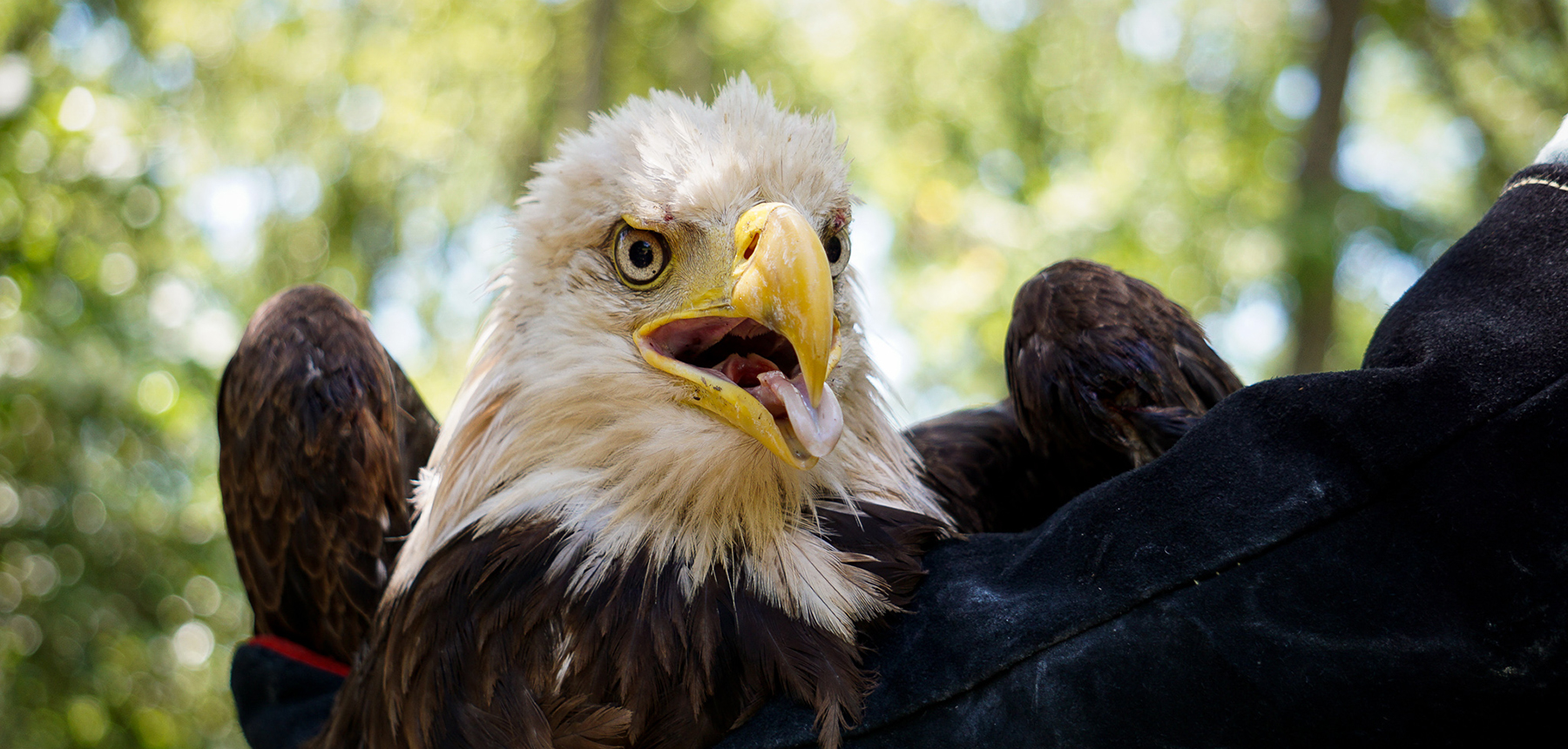
An Injured Eagle
AN INJURED BALD EAGLE WAS FOUND ALONG OUR TRAILS
An injured bald eagle was found along trails at Millican Reserve by several kind horseback riders not long ago. He’s recovering well, and we thought we’d take a moment to explore the rehabilitation process by interviewing wildlife rehabilitator Krista Bligh, who’s helping the eagle (nicknamed Max) get back into flying condition.
Tell us about yourself and what it means to be a wildlife rehabilitator.
My name is Krista Bligh, and I am a resident in Bryan-College Station, and a full-time student at A&M majoring in Wildlife and Fisheries Zoology. I am graduating this December and hope to attend Veterinary School soon after. I have lived in the Bryan College Station area my whole life. I am a licensed wildlife rehabilitator, which means I take in injured and orphaned wildlife with the intent to release them back into the wild. I take in a wide variety of animals, and this year alone I have rehabilitated raccoons, opossums, squirrels, rabbits, turtles, fawns (baby deer), hundreds of song birds, and quite a few raptors (owls, hawks, falcons, and eagles). In the past I have raised and released orphaned baby foxes and bobcats. A great majority of these animals are orphaned or injured due to human interactions such as being hit by a car, habitat loss, or attacked by pets.

How many animals do you help throughout the course of the year?
Throughout the year it averages around 500 animals. Right now I have an average of around 50 in my care. The number changes daily as animals are being released and arriving constantly. Springtime is my busiest time of the year since it is what we call the “baby season”.
What shape was Max in when you found him at Millican Reserve?
The eagle was in very bad shape when he was found. That is one of the things that makes wildlife rehabilitation so difficult. When an injured wild animal is finally able to be noticed and picked up by a human it is because it is on death’s doorstep. This eagle would not have been able to survive much longer if he didn’t receive help when he did. Besides being emaciated and not able to fly, the injury to his wing was an open wound which literally had thousands of maggots eating away the flesh in his wing.

Any clue to the cause of his injury?
He might have gotten in a fight with another eagle or with prey that was fighting back.
How do you care for him and other animals during their recovery?
For the eagle it took daily flushing out of the wound, and medications administered daily. The wound is now healed up, but due to the severity of the injury he lost some primary feathers. He cannot be released until those feathers grow back and he can fly once again. He has been moved to an outdoor flight cage and has his own pool which he uses for catching his food (lots and lots of fish) and for taking a bath.

Have you helped many eagles recuperate throughout your time doing this? Do they present any unique challenges?
I have only had a few other eagles since they are not too terribly common in our area.
Is Max likely to make a full recovery?
He should make a full recovery and I expect the new feathers to be fully grown back by the end of the summer.
How will you go about releasing him back into the wild?
Once the primary feathers have grown back, he will be released back where he was found.
What do you do with animals that can’t be returned to the wild?
Animals that cannot be released are placed in sanctuaries with the proper credentials or kept for education ambassadors for the public.

We’ll continue to keep you updated with the latest on Max and we can we expect to see him released back out at Millican Reserve. Thank you to Krista Bligh for letting us interview her and, of course, for doing the amazing work she does!
If you ever need her services, you can reach her at: 979-676-3974.
Learn more about the Millican Reserve Land Conservancy here.


